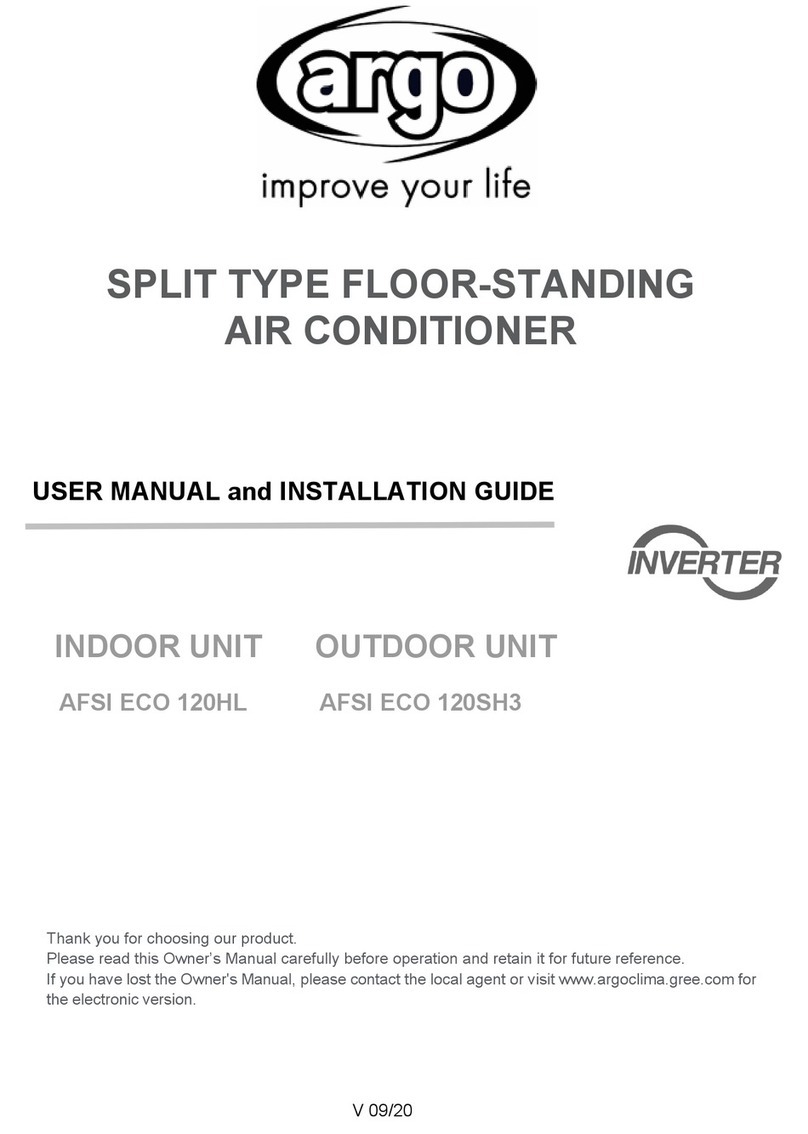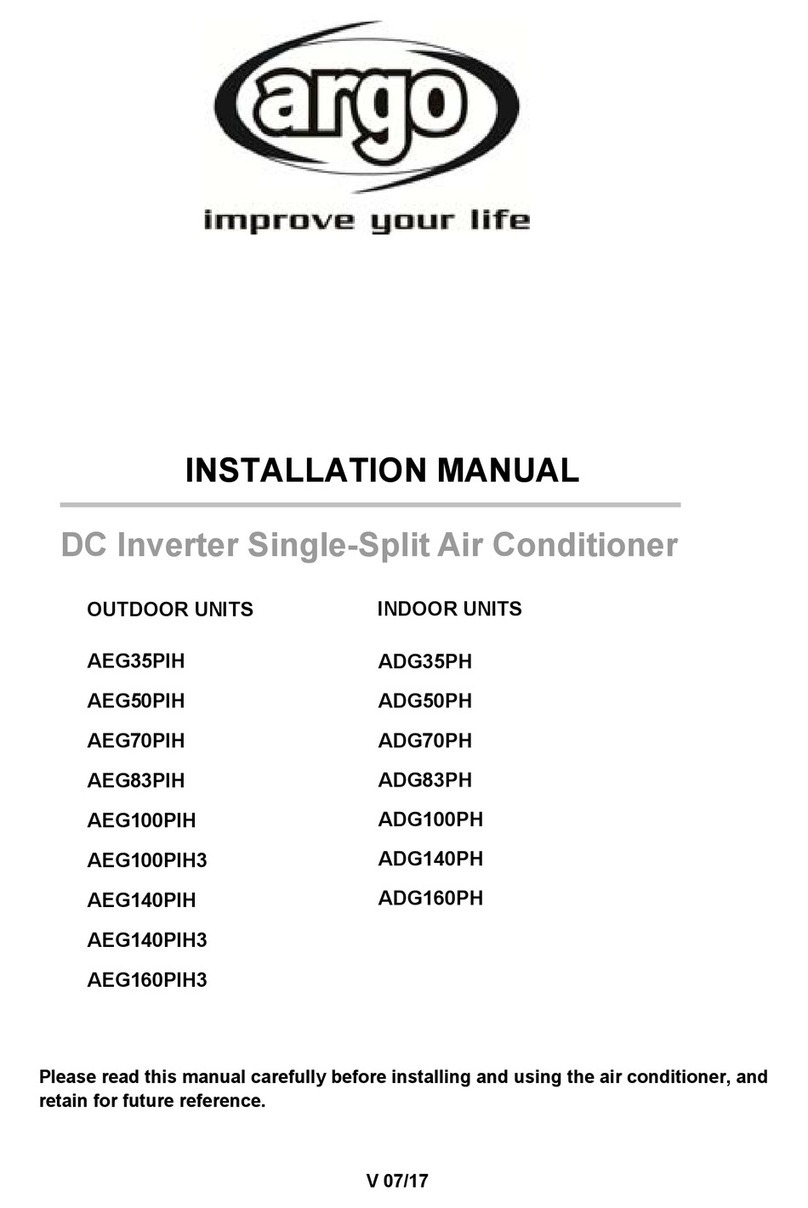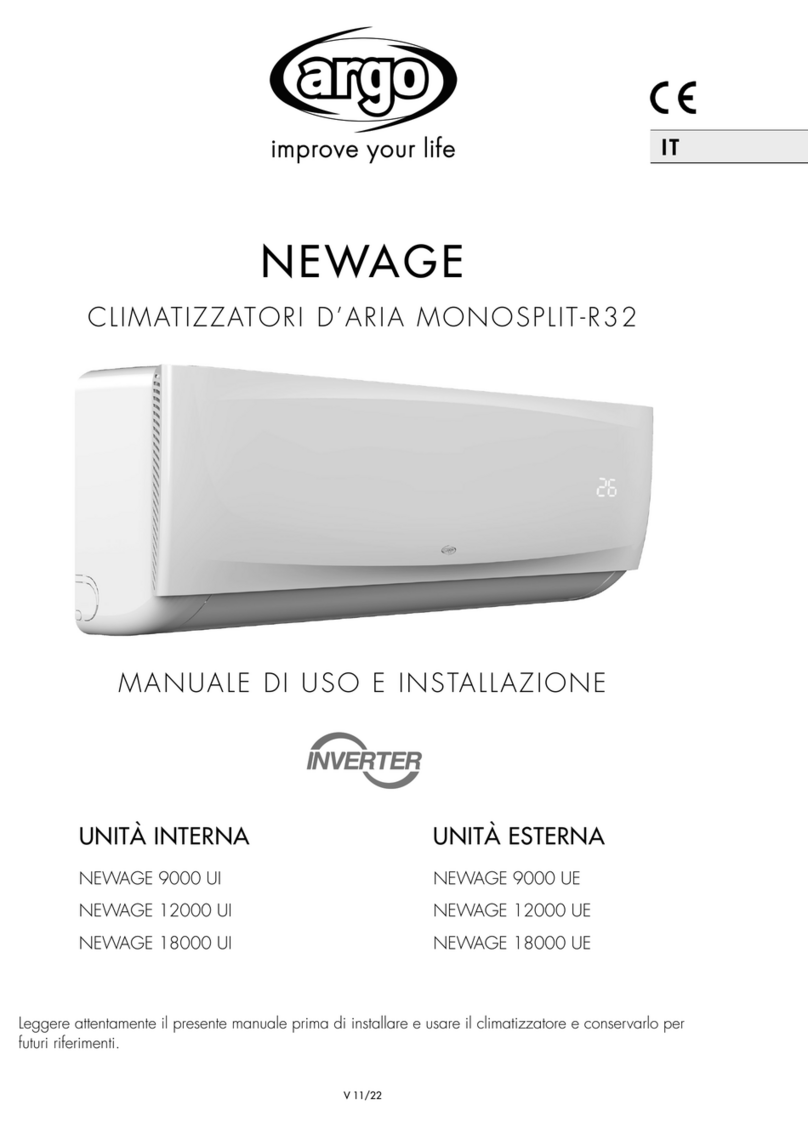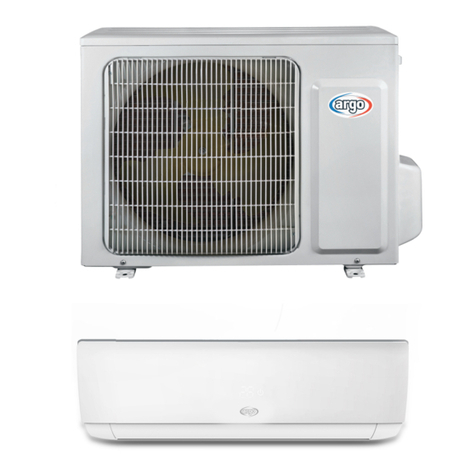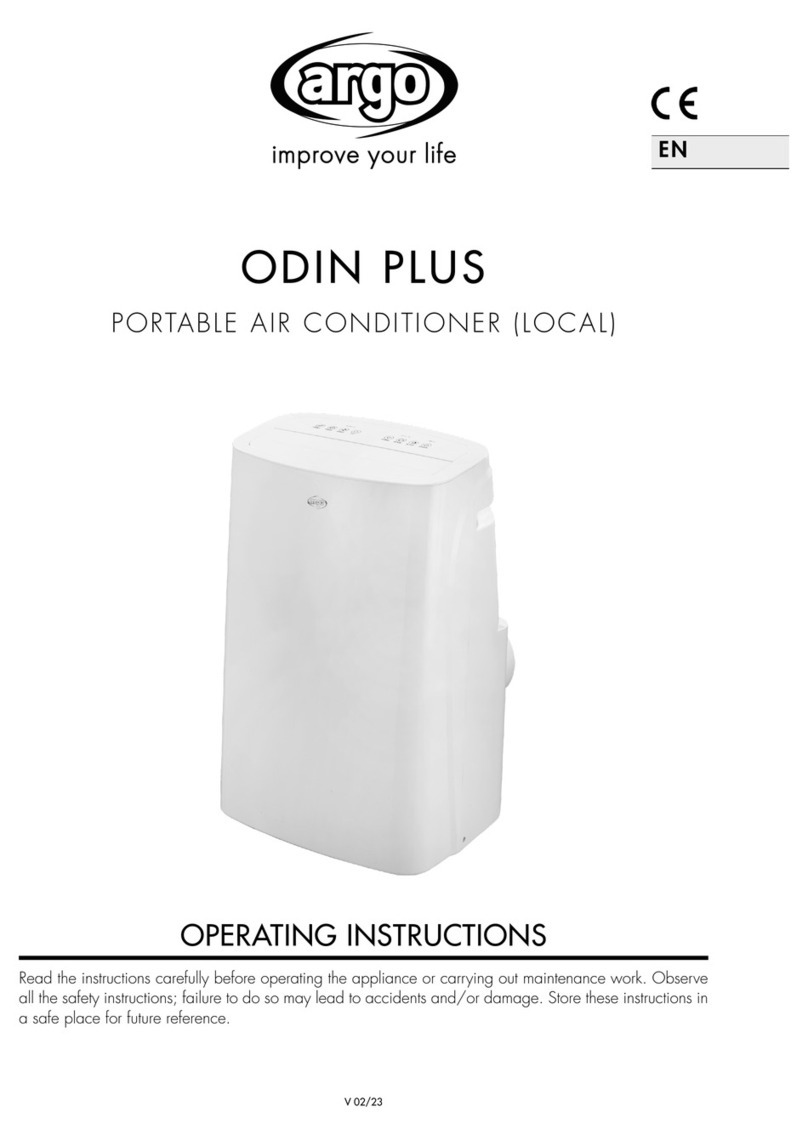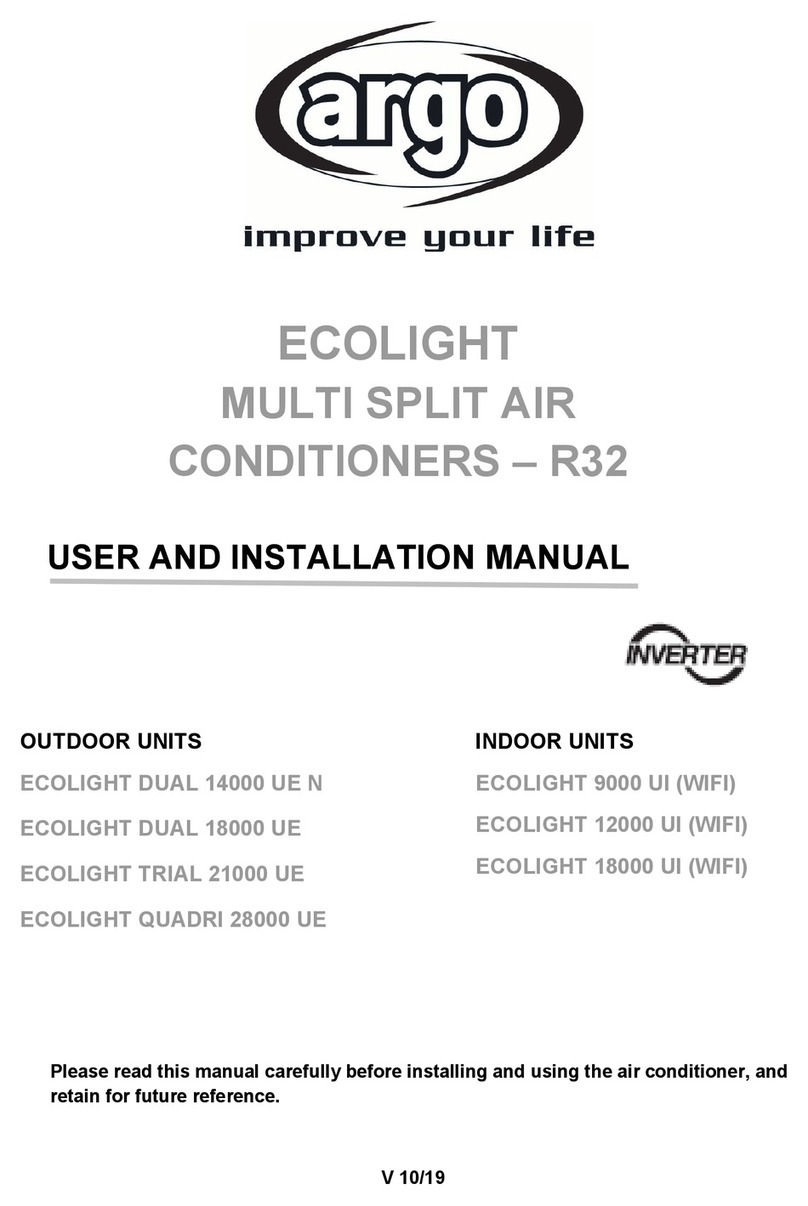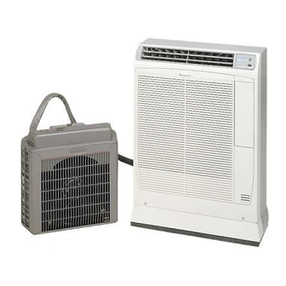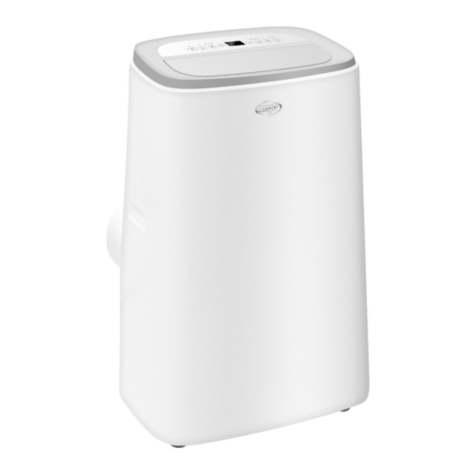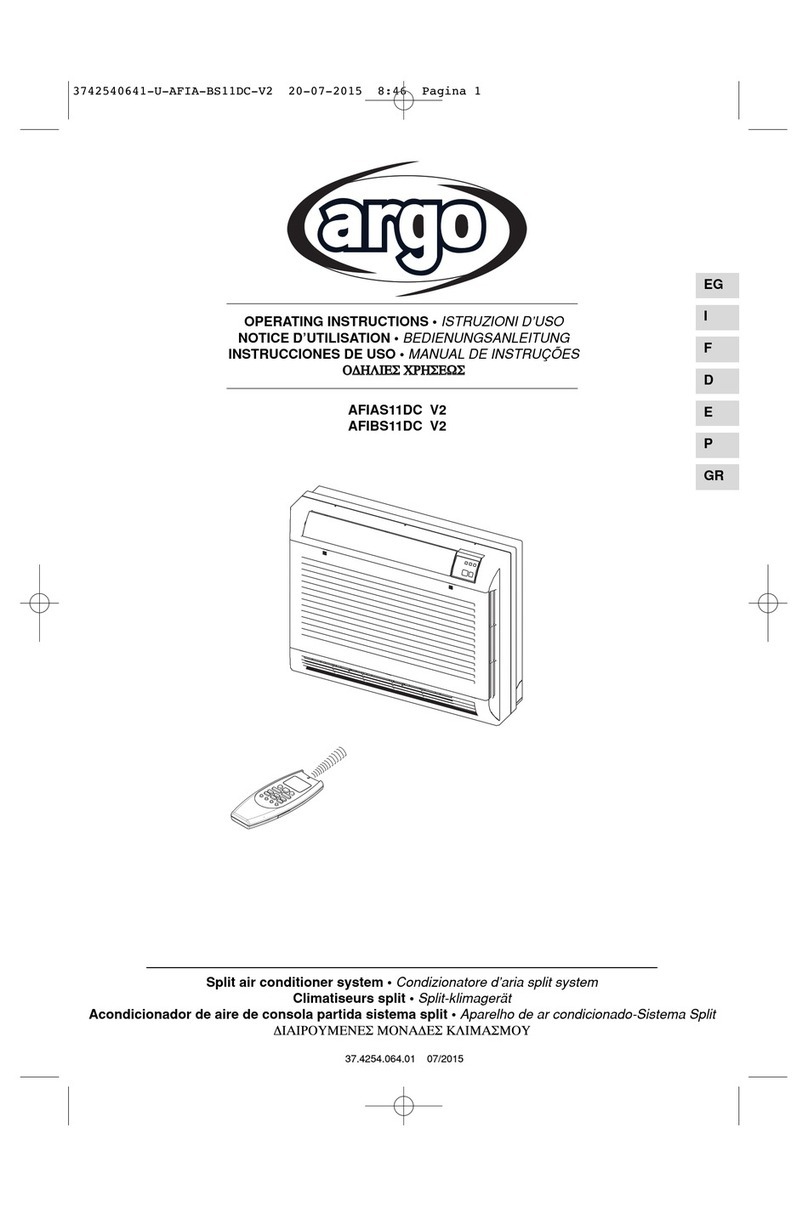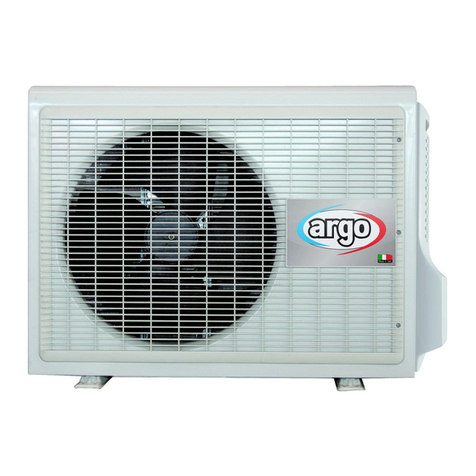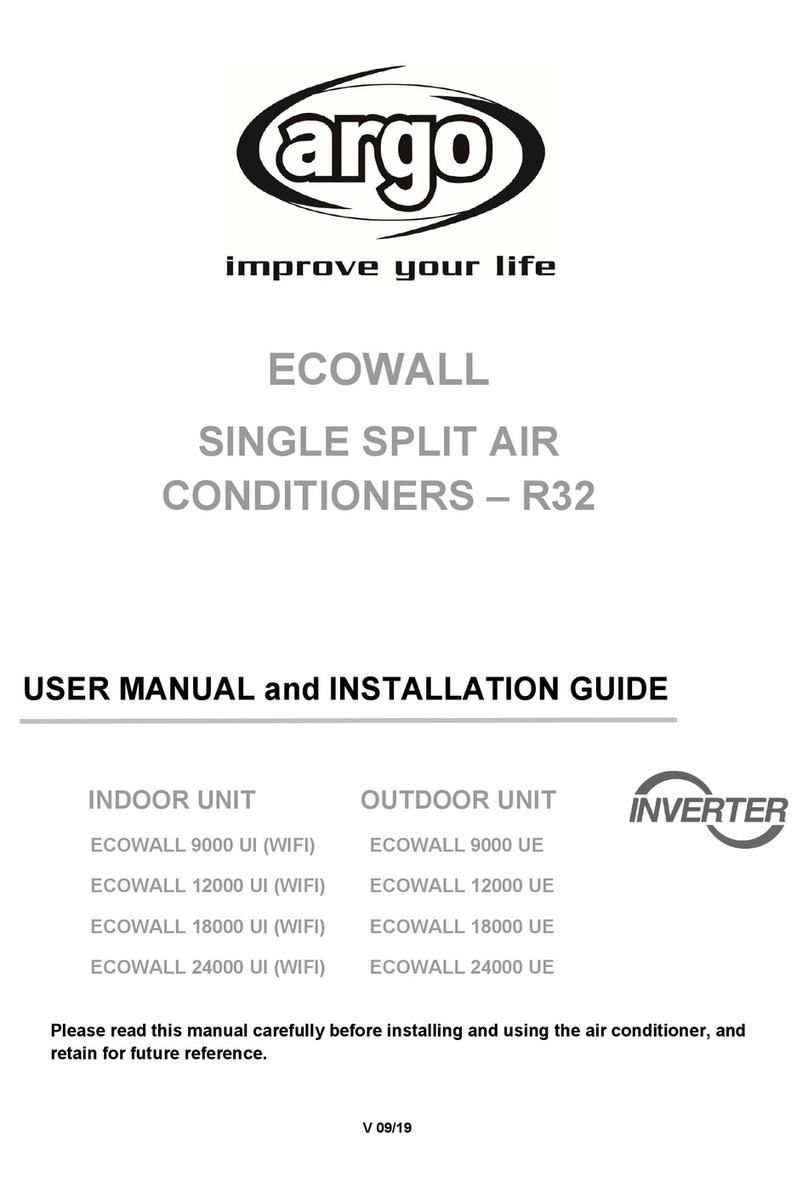2
IMPORTANT!
Veuillez lire ce qui suit avant de commencer
Ce système de conditionnement de l'air répond à des normes
strictes de fonctionnement et de sécurité. En tant qu'installateur
ou ingénieur de maintenance, une partie importante de votre
travail est d'installer ou d'entretenir le système de manière à ce
qu'il fonctionne efficacement en toute sécurité.
Pour effectuer une installation sûre et obtenir un
fonctionnement sans problème, il vous faut:
• Lire attentivement cette brochure d'information avant de
commencer.
• Procéder à chaque étape de l'installation ou de la réparation
exactement comme il est indiqué.
• Respecter toutes les réglementations électriques locales,
régionales et nationales.
• Observer toutes les recommandations de prudence et de sécurité
données dans cette notice.
• Pour l'alimentation de l'appareil utiliser une ligne électrique
dédiée.
Ce symbole fait référence à une pratique dangereuse ou
imprudente qui peut entraîner des blessures personnelles ou la
mort.
Ce symbole fait référence à une pratique dangereuse ou
imprudente qui peut entraîner des blessures personnelles ou des
dégâts matériels, soit à l'appareil, soit aux installations.
Si nécessaire, demandez que l'on vous prête assistance
Ces instructions suffisent à la plupart des sites d'installation et
des conditions de maintenance. Si vous avez besoin d'assistance
pour résoudre un problème particulier, adressez-vous à notre
service aprés vente ou à votre revendeur agréé pour obtenir des
instructions supplémentaires.
Dans le cas d'une installation incorrecte
Le fabricant ne sera en aucun cas responsable dans le cas d'une
installation ou d'une maintenance incorrecte, y compris dans le cas
de non-respect des instructions contenues dans ce document.
PRECAUTIONS PARTICULIERES
• Pour l’installation: raccorder les liaisons frigorifiques, puis les
liaisons électriques.
Pour le démontage: procéder de manière inverse.
Lors du câblage
UNE DECHARGE ELECTRIQUE PEUT ENTRAINER UNE
BLESSURE PERSONNELLE GRAVE OU LA MORT.
SEUL UN ELECTRICIEN QUALIFIE ET EXPERIMENTE
DOIT EFFECTUER LE CABLAGE DE CE SYSTEME.
• Ne mettez pas l'appareil sous tension tant que tout le système
de câbles et de tuyaux n'est pas terminé ou rebranché et vérifié,
pour assurer la mise à la terre.
• Des tension électriques extrêmement dangereuses sont utilisées
dans ce système. Veuillez consulter attentivement le schéma de
câblage et ses instructions lors du câblage.
Des connexions incorrectes ou une mise à la terre inadéquate
peuvent entraîner des blessures accidentelles ou la mort.
•Effectuez la mise à la terre de l'appareil en respectant les
réglementations électriques locales.
• Le câble jaune/vert ne peut en aucun cas être utilisé pour toute
autre connexion que celle de la mise à la terre.
• Serrez fermement toutes les connexions. Un câble mal fixé
peut entraîner une surchauffe au point de connexion et présenter
un danger potentiel d'incendie.
• Il ne faut en aucun cas laisser les câbles toucher la tuyauterie
du réfrigérant, le compresseur ou toute pièce mobile.
• N’utilisez pas de câble multiconducteur pour le câblage des
lignes d’alimentation électrique et celles de commande. Utilisez
des câbles séparés pour chaque type de ligne.
Lors du transport
Soyez prudent lorsque vous soulevez et déplacez les appareils
intérieur et extérieur. Demandez à un collègue de vous aider, et
pliez les genoux lors du levage afin de réduire les efforts sur votre
dos. Les bords acérés ou les ailettes en aluminium mince se
trouvant sur le climatiseur risquent de vous entailler les doigts.
Lors de l'installation...
... dans un plafond ou un mur
Assurez-vous que le plafond ou le mur sont suffisamment solides
pour supporter le poids de l'appareil. Il peut être nécessaire de
construire un solide châssis en bois ou en métal pour offrir un
support supplémentaire.
... dans une pièce
Isolez correctement tout tuyau circulant à l'intérieur d'une pièce pour
éviter que de la condensation ne s'y dépose et ne goutte, ce qui
pourrait endommager les murs et les planchers.
... dans des endroits humides ou sur des surfaces irrégulières
Utilisez une plate-forme surélevée pour offrir une base solide et
régulière à l'appareil extérieur.
Ceci permettra d'éviter des dégâts causés par l'eau et des
vibrations anormales.
... dans une zone exposée à des vents forts
Ancrez solidement l'appareil extérieur avec des boulons et un
châssis en métal. Réalisez un déflecteur efficace.
... dans une zone neigeuse (pour le système du type reversible)
Installez l'appareil extérieur sur une plate-forme surélevée à un
niveau supérieur à l'amoncellement de la neige. Réalisez des
évents à neige.
Lors de la connexion des tuyaux de réfrigération
• Limitez au maximum la longueur des tuyaux.
• Les raccordements sont de type flare.
• Appliquez de l’huile frigorifique sur les surfaces de contact avant
de les connecter, puis serrez l'ecrou avec une clé
dynamométrique pour effectuer une connexion sans fuite.
• Recherchez soigneusement la présence de fuites avant
d'effectuer l'essai de fonctionnement.
NOTE:
Selon le type du système, les tuyaux de gaz et de liquide peuvent
être petits ou gros. Par conséquent, afin d'éviter toute confusion,
le tuyau de réfrigérant de votre modèle particulier est dénommé
"petit" pour le liquide et "gros" pour le gaz.
Lors de la maintenance
• Interrompre l'alimentation électrique sur le commutateur principal
avant d'ouvrir l'appareil pour vérifier ou réparer le câblage et
les pièces électriques.
• Veillez à maintenir vos doigts et vos vêtements éloignés de
toutes les pièces mobiles.
• Nettoyez le site lorsque vous avez fini, en pensant à vérifier
que vous n'avez laissé aucune ébarbure de métal ou morceau
de câble à l'intérieur de l'appareil dont vous avez effectué la
maintenance.
• Aèrez la pièce pendant l'installation et l'essai du circuit réfrigérant;
assurez-vous que, après l'installation, des fuites de gaz
réfrigérant ne se produisent pas, puisque le contact avec des
flammes ou des sources de chaleur peut être toxique et très
dangereux.
DANGER
ATTENTION
DANGER
FG
